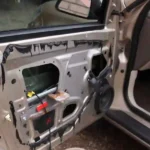Uniforms and workwear are an integral part of our daily lives, serving as symbols of identity, professionalism, and functionality. While they are designed to be practical, they also offer endless opportunities for creativity and style. In this article, we’ll explore the world of fashion design drawing for uniforms and workwear, shedding light on the artistry and innovation that goes into crafting garments that balance form and function.
1. The Significance of Workwear:
Workwear and uniforms are more than just clothing; they are a representation of an individual’s role and responsibilities. Whether it’s a doctor in a white coat, a firefighter in turnout gear, or a pilot in a uniform, workwear conveys a sense of purpose and authority.
2. The Evolution of Uniforms:
Uniforms have evolved over centuries, reflecting changes in society, technology, and fashion. Fashion design drawing for uniforms involves both respecting tradition and embracing modernity.
3. Designing for Functionality:
Workwear and uniforms must prioritize functionality. Sketches should demonstrate how clothing serves its intended purpose, whether it’s providing protection, facilitating movement, or enhancing safety.
4. Embracing Professionalism:
Uniforms are synonymous with professionalism. Fashion sketches should capture the crisp lines, tailored fits, and attention to detail that convey a sense of authority and competence.
5. Military Precision:
Military uniforms are known for their precision and symbolism. Sketches can explore the intricate details, insignias, and medals that adorn military attire, emphasizing the discipline and honor associated with these uniforms.
6. Healthcare Attire:
Medical professionals wear uniforms that inspire trust and confidence. Sketches should showcase lab coats, scrubs, and medical accessories that are both functional and comforting to patients.
7. First Responders:
Uniforms for first responders, such as firefighters and police officers, require a unique blend of durability and mobility. Sketches can highlight the protective gear, helmets, and reflective elements that are essential for safety.
8. Corporate Dress Codes:
In corporate settings, dress codes often dictate the attire. Fashion sketches can depict professional business attire, including suits, blouses, ties, and accessories that adhere to corporate standards while allowing for individual expression.
9. The Art of Hospitality:
Uniforms in the hospitality industry must strike a balance between professionalism and approachability. Sketches can capture the elegance of hotel staff uniforms, restaurant attire, or cruise ship outfits.
10. The Chicness of Chef Wear:
Chef wear combines practicality with a touch of culinary flair. Fashion design drawing for chef uniforms can showcase traditional chef’s whites, colorful aprons, and iconic headgear.
11. High-Fashion Uniforms:
Uniforms are not limited to practicality; they can also be a canvas for high fashion. Sketches can depict designer uniforms that combine style and functionality, as seen in airlines and luxury hotels.
12. Uniforms for Education:
Educational institutions often have their uniforms. Sketches can illustrate school uniforms that promote a sense of community and discipline while allowing for individuality through variations in accessories or customization.
13. Sporting Apparel:
Sports uniforms must accommodate movement and performance. Fashion sketches can explore the dynamic designs of jerseys, shorts, and athletic gear that reflect the spirit of competition.
14. Reflecting Cultural Heritage:
Uniforms often draw inspiration from cultural heritage. Sketches should capture the traditional elements, patterns, and colors that pay homage to specific cultures.
15. Sustainability in Workwear:
As sustainability becomes a priority, sketches can showcase eco-friendly materials and designs in workwear, highlighting the use of recycled fabrics and environmentally conscious production methods.
In conclusion, fashion design drawing for uniforms and workwear is an art that bridges the worlds of practicality and style. These sketches represent more than just garments; they embody identity, purpose, and a commitment to professionalism. Drawing for uniforms is a testament to the way clothing can elevate individuals, communities, and industries, all while celebrating the artistry and innovation that lie at the heart of fashion design. Whether it’s a symbol of authority, a reflection of cultural heritage, or a commitment to sustainability, uniforms and workwear are a canvas for creativity and professionalism, proving that fashion truly serves a higher purpose.




